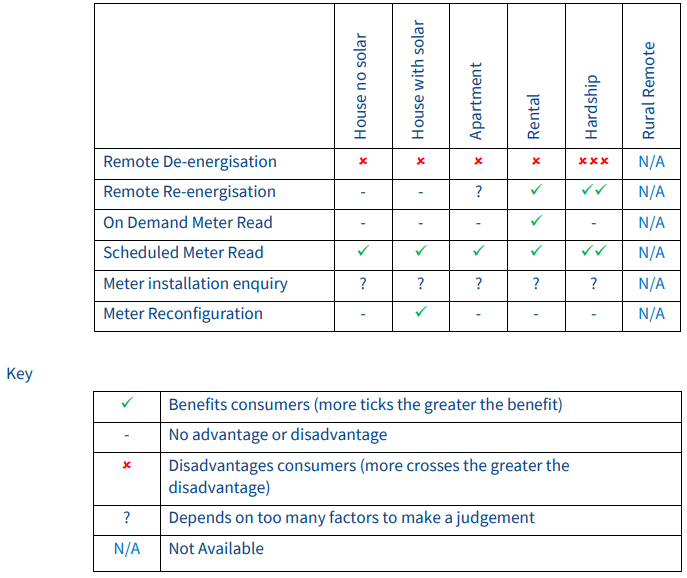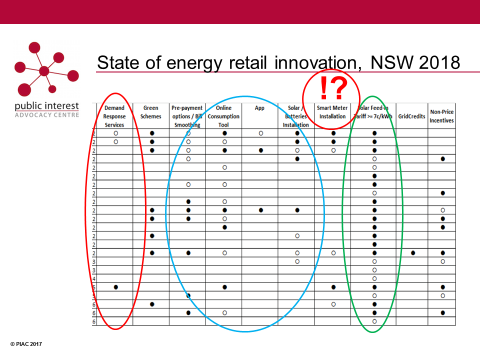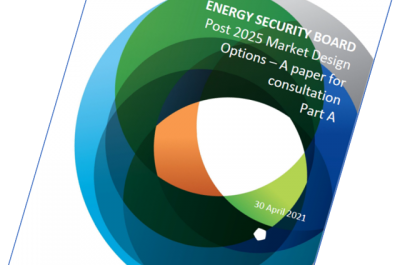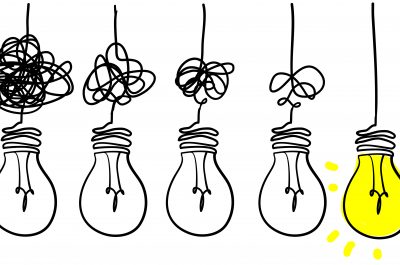Is it true smart meters cause headaches?
Mention ‘smart metering’ to many people in the electricity sector and a headache will quickly begin to form, akin to eating a Paddle Pop too fast and getting a brain freeze.
What should be a simple and effective way to deliver a rainbow (the best flavour) of data deliciousness to both customers and network operators is splinted, like the wooden stick within the Paddle Pop, by the use of low-specification meters delivering vanilla services and by rules preventing network operators access to the really tasty data.
A new report, ‘Smart-er Metering Policy: Getting the framework right for a consumer-focused smart meter rollout’, from the University of Melbourne identifies the challenges the national smart meter rollout framework is encountering. Focusing on the issue through a consumer lens, Sangeetha Chandrashekeran (University of Melbourne), Gavin Dufty (St Vincent de Paul) and Dr Martin Gill (independent consultant) suggest policy makers ‘could, and should, do significantly more’[1] to ensure that the full potential benefits of smart meters are realised for consumers.
From 1st December 2017 responsibility for supplying customers with electricity meters shifted from distribution network operators to retailers in all NEM states except Victoria.
As suggested in the report, the AEMC’s plan to have retailers work with customers to install smart meters only where requested or required works fine on paper; customers only pay for what they want and networks negotiate with metering coordinators to get the information they require to manage the network.
Here comes the brain freeze headache… the minimum functionality of the smart meters being rolled out under the competitive framework does not allow for customers to get the full value of installing a “smart” meter.
Not-so-smart meters?
According to the University of Melbourne report[2], here is a list of actions a customer can do with an AEMC minimum-specification smart meter:
- Ask your retailer for more frequent billing.
- Ask your retailer for a final meter read, upon moving out of your home (but not schedule one prior to moving out), at which time you can arrange to pay the final electricity bill.
Here is a list of what customers can’t do with an AEMC minimum-specced smart meter:
- Sync household appliances with the meter, preparing for possible time of use tariffs;
- Load control with lower tariffs (e.g. off peak hot water heaters);
- Participate in demand response markets, such as being a member of a virtual power plant (when paired with a battery);
- Participate in demand management measures to increase the value of your smart appliances, solar and battery storage;
- Ensure your power supply quality is up to scratch.[3]
Other than that, the AEMC’s minimum smart meter specification allows the retailer to remotely connect or disconnect your electricity supply, and your distribution network operator should be able to check your connection for a blown fuse or a connection problem resulting in supply or safety concerns. However, in practice, network operators may not be able to do this, as access by the network to the meter data is not guaranteed.[4]
The report analysed each of the six minimum meter functionalities/services specified by the AEMC for direct customer benefits stating that,
‘Our analysis suggests only the Scheduled Meter Read has the potential to support household benefits broadly. The following table summarises an assessment of the consumer benefits of the six minimum smart meter services:’[i]

Source: University of Melbourne 2018, ‘Smart-er Metering Policy’
So you want to know your options…
Let’s consider the customer experience. As an interested customer, you decide you are going to contact your electricity retailer to understand what sort of meter you have and what functionalities or services are available to you.
The University of Melbourne report states that:
At the time of writing Australian retailers have already installed almost 400,000 smart meters to their customers in New South Wales, Queensland and South Australia. The immediate question is what additional services have these customers been able to access? At this point in time, there are very few retailers offering smart meter enabled services to their customers.[ii]
Further, in a presentation to the Energy Consumers Australia Foresighting Forum 2018 last week, Craig Memery from the Public Interest Advocacy Centre (PIAC) illustrated the paucity of information received by NSW customers relating to smart meters and demand response services. In a “mystery shopper” exercise, multiple phone calls were made to two dozen retailers. The results are outlined in the slide below.

Source: PIAC 2018, ‘A peak behind the curtain: Getting wholesale demand response to customers’ (Presentation to Energy Consumers Australia Foresighting Forum 2018).
According to Memery, when consumers asked if they could have smart meter installed, the most common answer was that they didn’t offer smart meters (despite the rules). The second most common answer was to refer the customer to their local distribution network operator (despite networks being no longer allowed to install smart meters under the AEMC metering contestability framework). The third most common answer was; yes they could install a smart meter; however, only half of retailers could install it within the next 6 months. This may explain the recent announcement from the Federal Energy Minister requesting that the AEMC introduce new rules setting maximum timeframes for meter installations.
Delectable data
As previously discussed here, the extensive use of smart meters can deliver delectable data to networks and customers, which creates value for both parties.
Within Victoria alone, where smart meters have been introduced to every premise prior to the AEMC rollout, $100 million in network expenditure savings have been identified by one network operator[iii], and a 75% reduction in reported electrical shocks for another[iv]. This is almost entirely attributable meters being in every premise, network operators having access to the meter data, and the meters being of sufficient minimum specifications.
Victorian distribution network operators have also created data portals for customers to download consumption data; compare usage with other customers; set maximum daily consumption reminders; receive emails and text messages for unplanned outages in their area; and sync in-home display devices with their smart meter.
The University of Melbourne report notes:
‘Significant societal and consumer benefits are usually associated with smart meter rollouts leading to more efficient management of the distribution network, for example faster power restoration after blackouts using meter outage notifications. The AEMC regulations currently provide no certainty that distribution businesses can access the data they require, or that it will be provided cost-effectively even if they can access the data.’[v]
Recognising that provision of data to customers also enables improved consumer choice, the University of Melbourne report calls for these services to be available for all customers within the National Electricity Market, with additional functionality to allow customer-consented access to data by third parties (such as electricity tariff/plan comparison providers). The same paper states:
‘it is not enough that these tools simply exist; consumers must be actively encouraged to access and utilise these tools and services for their own benefit’[vi].
Interestingly, a separate report released last week, from HoustonKemp working on behalf of the COAG Energy Council, has also called for the need to develop a consumer electricity data access scheme. The proposed objective for the data access scheme is:
‘To facilitate on-demand access by retail customers or a customer’s authorised representative to consumer electricity data’.[vii]
The HoustonKemp report seeks input from stakeholders on a range of questions relating to the proposed shape and function of an Australian Government-backed scheme, with submissions due 26 March 2018.
While progress on consumer access to data is positive, it will not resolve a fundamental issue for networks and customers: smart meters with limited capabilities being rolled out and controlled by third parties can impede access to data required for energy management and smart grid functions, therefore limit the value of smart meters to customers.
[1] Chandrashekeran D, Dufty G & Gill M 2018, ‘Smart-er Metering Policy: Getting the framework right for a consumer-focused smart meter rollout’, University of Melbourne, p 3
[2] Ibid, pp 15 & 17.
[3] Ibid, pp 15 & 17
[4] Ibid, page 17
[i] Ibid., p22
[ii] Ibid., p 4
[iii] Energy Networks Australia 2017, ‘Developments in energy market competition in Victoria’
[iv] Ibid.
[v] Chandrashekeran D, Dufty G & Gill M 2018, ‘Smart-er Metering Policy: Getting the framework right for a consumer-focused smart meter rollout’, University of Melbourne, p8
[vi] Ibid., p13
[vii] HoustonKemp 2018, ‘Facilitating access to consumer electricity data: A draft report for the Department of Environment and Energy’, p.i



